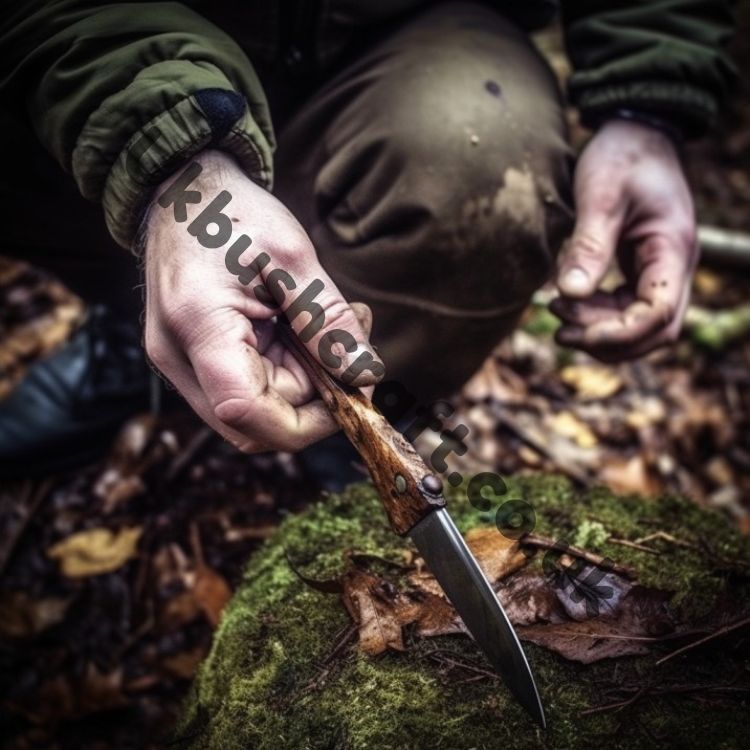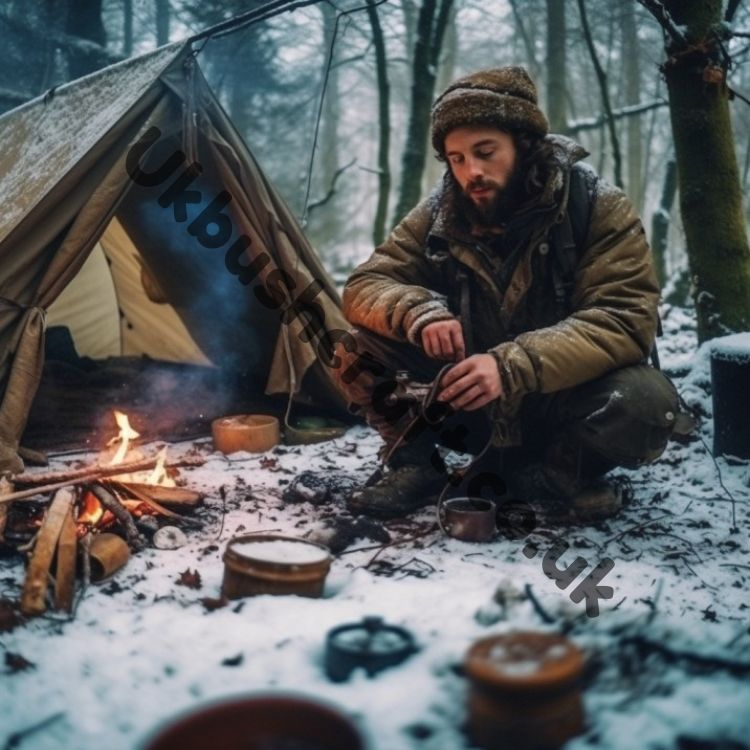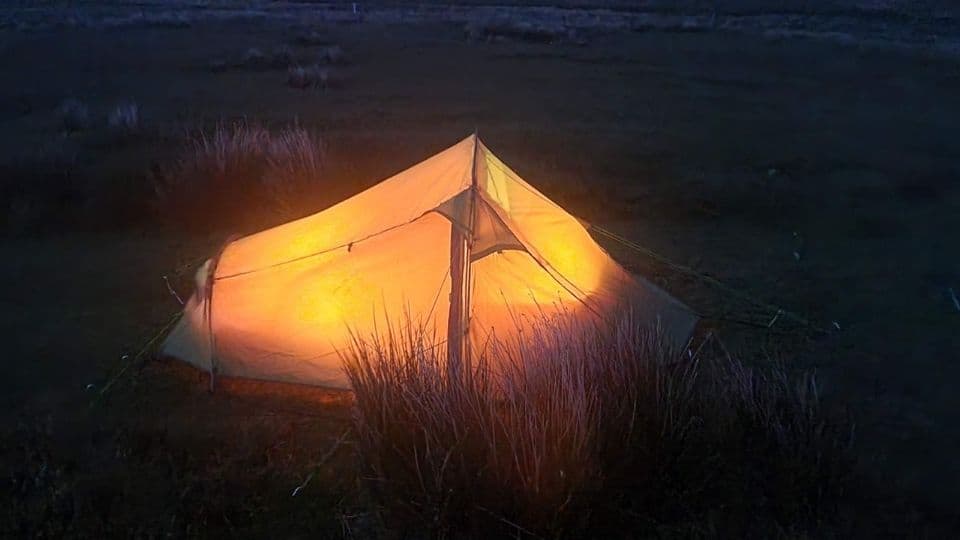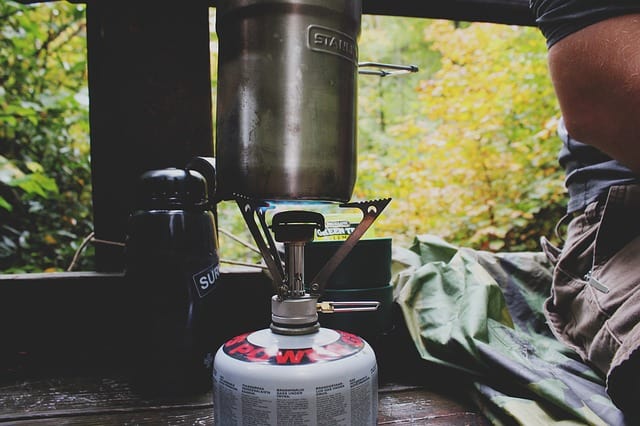We have compiled a list of the 5 best bushcraft knives on the market right now!
Looking for the best bushcraft knife can be challenging.
There are many different styles, brands, and materials to choose from so knowing what’s what can be tricky.
For many people, the best bushcraft knife is one that can handle any task you throw at it, For others, it’s a matter of preference be that style, blade type, weight, or length.
We’re here to help you find out which best suits your needs!
Here are five knives with very different designs and features that we think will make great additions to any bushcrafter’s collection.
Last update on 2024-07-27 at 07:29 / Affiliate links / Images from Amazon Product Advertising API
Mora Outdoor Knife
Last update on 2024-07-27 at 07:29 / Affiliate links / Images from Amazon Product Advertising API
The Morakniv Companion is a fixed blade knife with 1/8-inch (3. 2 mm) thick stainless steel blade that makes it perfect for outdoor enthusiasts and bushcraft survival. The Companion’s 4. 3-inch (109 mm) long blade has a 0. 125″ (3. 2 mm) thickness, making it an ideal companion for camping, hunting, and fishing trips where you need to cut wood or other materials while out in the wilds of nature.
The high friction rubber grip on the handle makes this knife easy to hold onto even when your hands are wet.
As with all moras, they are pretty sharp straight out of the box so that you can get straight to the action, and the scandi grind will be easy to maintain
Camillus Western Black River Fixed Blade Knife
Last update on 2024-07-27 at 07:29 / Affiliate links / Images from Amazon Product Advertising API
The Camillus Western Black River Fixed Blade Knife is a popular hunting knife. The blade is made of 420 Titanium bonded stainless steel. It features a 3.75″ drop point blade and an ergonomic handle with a non-slip grip for maximum comfort and control during use.
The knife also has a custom made Ballistic Nylon sheath with a belt loop for easy carrying convenience.
This full tang knife measures 10″ in length and weighs 249.48 Grams ounces, making it the perfect size for most outdoor applications such as hunting or camping trips.
Camillus MASK Fixed Blade Knife
Last update on 2024-07-27 at 07:29 / Affiliate links / Images from Amazon Product Advertising API
Camillus MASK Fixed Blade Knife It features a 4″ drop point blade made from 420 stainless steel and titanium bonded to ensure durability and strength in extreme conditions, as well as a Prym1 camo handle that provides an easy grip for any situation you may face while out in the field or on the hunt!
Gerber Moment Fixed Blade Knife
Last update on 2024-07-27 at 07:29 / Affiliate links / Images from Amazon Product Advertising API
The Gerber Moment Fixed Blade Knife is the ultimate survival tool. With a full tang, fixed blade construction, and a textured rubber handle that ensures secure all-conditions confidence in your grip, this knife can rise to the challenge of long term use.
The nylon sheath with metal snaps keeps your knife within easy reach and securely stowed. A balanced feel and comfortable grip make this an ideal hunting companion or everyday carry knife for outdoor enthusiasts who want one tool they can rely on for any situation.
Hultafors RFRGH 208mm Craftman’s Knife
Last update on 2024-07-27 at 07:29 / Affiliate links / Images from Amazon Product Advertising API
The Hultafors Bushcraft Knife is made from stainless steel and has a 57-59 HRC hardened edge. The handle is made from super-durable polypropylene plastic and fitted with a Santoprene friction grip for good grip in all weather conditions.
The thickness of the blade is 2.5 mm. This knife can be used for both heavy duty tasks as well as finer work such as carving or whittling.
How To Choose The Best Bushcraft Knife
There are many bushcraft knives on the market today, So how do you choose which one is best for your purposes?
What are you going to be using your knife for? If all you plan to do is a little spoon carving, then you could get away with something a little smaller, or are you going to be batoning wood every time you camp?
The first thing to think about is what size of knife would best suit your needs. Are you looking for a carving knife, maybe something with more finesse and precision? or are you looking for a workhorse? Different sizes and styles of blades have different uses, so it’s important that you pick a blade that will meet those specific requirements.
Think about the best way to carry your knife. Some bushcraft knives come with sheaths that attach to your belt or can be hung around your neck for easy access.
What size of blade would best suit your needs: smaller blades might be better if you’re looking for precision work, while larger blades may offer more versatility depending on whether they include features like serrations or not
What Is The Best Steel For Bushcraft Knives
Many bushcraft knives available on the market typically come with two types of blade material: one which is prone to rusting more quickly (carbon) or (stainless), which will hold up better to heavy use but can be harder to maintain a good edge.
Users usually prefer carbon steel knife blades because it offers an easy to maintain edge with an easy-to-sharpen surface.
Carbon Steel – Of all the many types of metals used to make good quality bushcraft knives, there’s none better than carbon steel. It offers decent edge retention and sharpness even after doing heavy work.
Corrosion can be a problem for carbon steel knives if not correctly maintained. After each use, the knife should be cleaned, and a light film of oil applied to the blade; doing this will prolong the life of your knife.
Stainless Steel – Probably less popular among wild campers due to its lack of ability to sharpen as effectively as carbon steel, bushcraft knives made from stainless will hold up to much more abuse but at the cost of being much harder to maintain the edge.
Stainless knife blades are king when it comes to corrosion protection, so they’re perfect for anyone who wants a low Maintainance knife.
FAQ
Should a Bushcraft Knife Be a Fixed Blade or a Folding Blade?
Fixed blade knives are best for bushcraft because they offer one of the best all-around knife designs. They can also be used in just about any type of outdoor activity that requires such a knife.
If you’re going to use your bushcraft knife as an everyday carry or EDC, then consider getting either a quality folding pocketknife.
What Is a Fixed Blade Knife?
A fixed blade knife is a knife with one blade that does not fold or close into the handle.
Fixed blades are more durable than folding knives, and many people prefer them for outdoor work because they can be used without having to open and then close a blade again before use.
They also have fewer parts, making it easier to clean them after use in damp and dirty conditions.
What Is a Folding Blade Knife?
A folding blade knife is a type of pocketknife. They have blades that fold into the handle to provide more safety when not in use. Folding blade knives are usually small enough to fit on your belt or within a backpack.
Folding knives are usually not used for bushcraft as they are not as strong as a fixed blade alternative when it comes to batoning wood and other heavy camp tasks.
What Is a Full Tang Knife?
The best bushcraft knives are full tang, meaning that the metal of the blade goes all the way from the handle to its tip; This makes these blades much more durable than other types of bushcraft knives, like folding knives as the blade and part of the handle are one solid piece of metal.
Full tang is much more durable and safer when (Battoning) splitting wood; with a folding knife, joints will quickly wear out and become loose with regular batoning.
What Is the Best Blade Grind for a Bushcraft Knife Blade?
A Scandi grind is best for most tasks around camp; it holds a decent edge and is super easy to sharpen both at home out in the field if you go with a carbon steel option.
Stainless steel is still a good choice; it just needs more work/time to maintain the edge.
The scandi grind also excels with finer cutting jobs like carving feather sticks or whittling spoons.
What Is a Convex Grind?
Convex Grind: This is a grind where the blade starts out thick at the knife’s spine and gradually thins as it goes to the edge(think of an axe). Convex grind knives are pretty easy to sharpen. The edge can often be really thin and prone to chipping due to it being such a thin edge.
What Is a Scandi Grind?
The scandi grind is a large flat primary bevel, and there is no secondary bevel on a scandi; it’s that large flat bevel that makes sharpening so easy with a scandi.
For durability, I would say a scandi is middle of the road in terms of edge retention and chipping its not as thin as a convex but not as thick as a sabre, so it is sort of the best of both worlds.
What Is a Sabre Grind?
A sabre grind usually starts around halfway down the width of the knife blade with a primary grind, then right on the edge of the blade is a secondary bevel (or micro bevel).
Now the sabre can be a little tricky for a beginner to resharpen as the bevel is so small that it ends up rounded over most of the time.
The saber is quite a strong grind in terms of edge retention due to the thickness of metal so close to the blade’s edge.
What Oil Should You Apply To a Carbon Steel Knife Blade?
Suppose you are maintaining your knife at home. In that case, almost any oil will protect your knife, such as WD40, 3 in 1 oil, car engine oil, even diesel, tho my favorite oil is Balistol as it ticks a lot of boxes for what it does and is also food safe and also a disinfectant, I use it for all of my outdoor equipment.
Last update on 2024-07-27 at 00:30 / Affiliate links / Images from Amazon Product Advertising API
Remember if using your knife for food prep to clean off as much oil as you can before prepping any food.
The best oils to maintain and protect your knife are typically natural, food-safe, plant-based options. These include vegetable oils like olive or canola oil as well as coconut oil.
Looking for a Folding saw? check out our post here
Final Thoughts
When choosing which type of knife best suits your needs, it’s best to consider what you’ll primarily need the knife for as well as how often you plan on using it before deciding between carbon or stainless steel construction.
It’s also important to note whether or not this will mainly be used in wet conditions since these two metals react differently when exposed to moisture.
The best bushcraft knives are those that provide the best balance of durability, ease of use, and affordability. We’ve provided reviews for 5 great bushcraft knives as well as some other helpful information about knife construction so you can make a more informed purchase decision.





